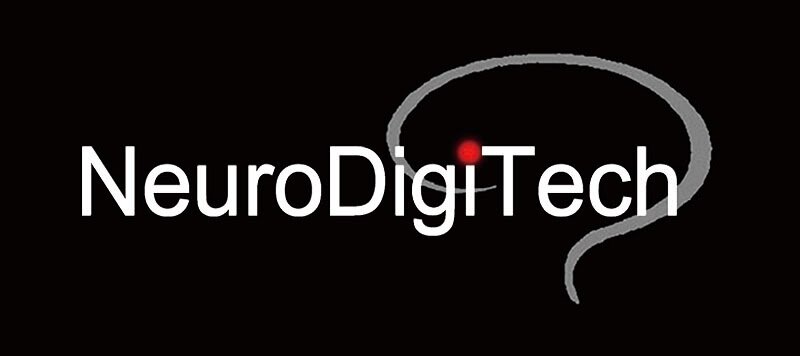NDT104 FD Rapid GolgiStain™ Kit (Large)
Price: $882.00 (For up to 50 mouse brains)
NDT104-A FD Rapid GolgiStain™ Kit (Small) (For up to 25 mouse brains)
Price: $699.00 (For up to 25 mouse brains)
*Supplemental solutions: NDT104-C (Solution C only, 250 ml): Price: $170.00
Golgi-Cox impregnation1,2 has been one of the most effective techniques for studying both the normal and abnormal morphology of neurons as well as glia. Using the Golgi technique, subtle morphological alterations in neuronal dendrites and dendritic spines have been discovered in the brains of animals treated with drugs as well as in the postmortem brains of patients with neurological diseases3,4. However, the reliability and time-consuming process of Golgi staining have been major obstacles to the widespread application of this technique.
NDT104 Kit is designed based on the principle of the methods described by Ramon-Moliner2, Glaser and Van der Loos5. This kit has not only dramatically improved and simplified the Golgi-Cox technique but has also proven to be extremely reliable and sensitive for demonstrating morphological details of neurons and glia, especially dendritic spines. The Kit has been extensively and widely used 6,7 on the brains of several species of animals as well as on the specimens of postmortem human brains.
Golgi-Cox impregnation of the human cerebral cortex, using NDT104 FD Rapid Golgistain kit.
Golgi-Cox impregnation of human cerebral cortex, using NDT104 FD Rapid Golgistain kit.
Golgi-Cox impregnation of rat subiculum, using NDT104 FD Rapid Golgistain kit. Note the various shapes of the spine subtypes (arrow, right).
The Golgi-Cox stained whole mouse brain, using NDT104 FD Rapid Golgistain kit. Note the multiple scans of slide sections, aligned and stitched using Nikon NIS-Elements AR software.
Comparison of spine density between knockout (upper) and wildtype (lower) mice, using NDT104 FD Rapid Golgistain kit. Note a difference in spine density of dendritic segments.
Golgi-Cox impregnation of purkinje cells of the cerebellum, using NDT104 FD Rapid GolgiStain kit.
Key Contents:
Solution A (250 ml)
Solution B (250 ml)
Solution C (250 ml x 2)
Solution D (250 ml)
Solution E (250 ml)
Glass Specimen Retriever (2)
Natural hair paintbrush (3)
Dropping bottle (1)
Materials Required, but Not Included:
Double distilled or deionized water.
Plastic or glass tubes or vials.-
Histological supplies and equipment, including gelatin-coated microscope slides, coverslips, staining jars, ethanol, xylene or xylene substitutes, resinous mounting medium (e.g. Permount®), and a light microscope.
References:
Corsi P: Camillo Golgi's morphological approach to neuroanatomy. In Masland RL, Portera-Sanchez A and Toffano G (eds.), Neuroplasticity: a new therapeutic tool in the CNS pathology, pp 1-7. Berlin: Springer, 1987.
Ramon-Moliner E: The Golgi-Cox technique. In Nauta WJH and Ebbesson SOE (eds.), Contemporary Methods in Neuroanatomy. pp 32-55, New York: Springer, 1970.
Graveland GA, Williams RS and DiFiglia M: Evidence for degenerative and regenerative changes in neostriatal spiny neurons in Huntington's disease. Science 227:770-773, 1985.
Robinson TE and Kolb B: Persistent structural modification in nucleus accumbens and prefrontal cortex neurons produced by previous experience with amphetamine. J. Neurosci. 17:8491-8497, 1997.
Glaser ME and Van der Loos H: Analysis of thick brain sections by obverse-reverse computer microscopy: application of a new, high clarity Golgi-Nissl stain. J. Neurosci. Methods 4:117-125, 1981.
Dahl JP, Wang-Dunlop J, Gonzales C, Goad MEP, Mark RJ and Kwak SP: Characterization of the WAVE1 knock-out mouse: implications for CNS development. J. Neuroscience 23: 3343-3352, 2003.
Milatovic D, Zaja-Milatovic S, Montine KS, Horner PJ, and Montine TJ: Pharmacologic suppression of neuronal oxidative damage and dendritic degeneration following direct activation of glial innate immunity in mouse cerebrum. J. Neurochem. 87: 1518-1526, 2003.
Terms and Conditions
For quality assurance of our service, it is recommended that you discuss with us for preferred perfusion protocol and histology and/or immunolabeling protocols.
It is suggested that you use Gel-coated microscopic slides for tissue mounting and 0.17um-thick coverslips.
A 15% of the fee will be due upon authorization of the study; and the remaining fee will be due upon delivery of study results.
Progress of the service is contingent upon staining quality of tissues, operated by the independent contractor.
Should early termination occur, Neurodigitech will prorate the cost incurred and invoice the Sponsor. The first portion of the fee is non-refundable.






